Contents
Farmers in Western Siberia and the Urals, who grow sweet bell peppers on their plots (in greenhouses or greenhouses), most often recommend that novice gardeners pay attention to the early varieties of this crop. This is argued by the fact that in these climatic zones, spring warming, as a rule, is late, and a cold rainy autumn with the first frosts may come in mid-October. However, is it really so, and why early varieties of peppers planted in open ground sometimes give worse yields compared to mid-season and late ones.
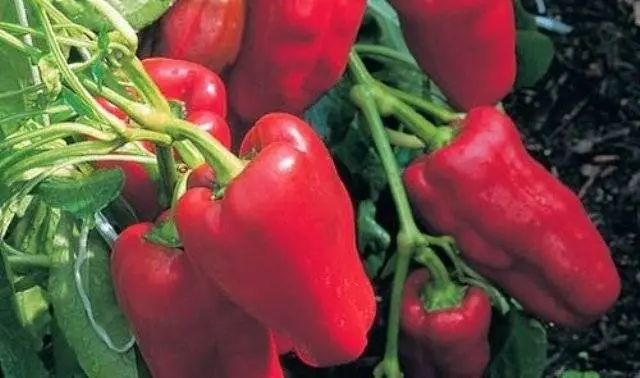
What to look for when choosing a variety
Starting to look for “what they need”, gardeners rush to the Internet for information, looking for the desired variety in numerous volumes of the State Register of Vegetable Growing. However, many varieties and hybrids included in the register and intended for cultivation in the unstable climate of the Urals are only theoretically suitable for obtaining good and stable yields.
When choosing the best sweet pepper for the regions of the Urals, you need to focus on the winter hardiness of the variety, its adaptability to a certain light zone and a short cool summer. All this can be initially laid down in the hybrid by breeders, but the gardeners themselves must observe the basic set of conditions for heat-loving sweet pepper.
Here are just a few recommendations from the farmers of the Urals who receive early and mid-season Ural sweet peppers on their plots:
Germination of planting material

Despite some recommendations from manufacturers that seeds should be germinated and hardened in February, for the Ural soils this event should be carried out no earlier than March 20. As soon as the seeds hatch, immediately sow them.
Growing strong, disease-resistant seedlings
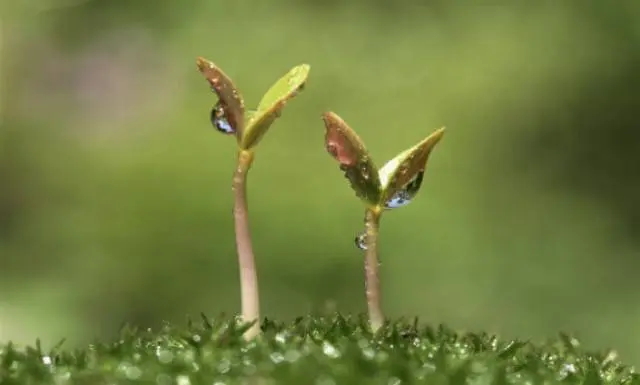
The hatched seeds are sown in opaque cups. Since the root of the pepper is too weak and easily injured, it is better if the planting material is planted in disposable peat containers. The second rule – in no case do not let the seedlings dry out, regularly watering the seedlings. The air temperature in the room where the pepper sprouts should not fall below 25-260C.
warm air and soil
Be sure to prepare beds for transferring seedlings to open ground. If the soil is prepared and insulated correctly, the guarantee of high yields is guaranteed. At a time when the seedlings are already prepared for transfer, you need to put heated plastic bottles of water or natural stone on the beds, which gives off heat at night and heats up in the sun during the day.
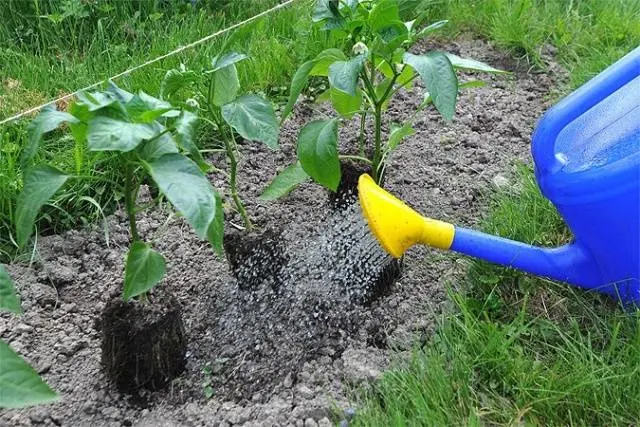
The same applies to air temperature. Transplant peppers outdoors only when the temperature is guaranteed not to drop below 14-160C. In the process of growth, flowering and fruiting, the ideal temperature regime is 260C. Mid-season and early varieties of pepper for the Urals love neutral soils. 2,5 weeks before transferring seedlings to open ground, fertilize the soil with compost.
Watering and lighting
It’s no secret that sweet bell peppers love regular watering and direct natural light. Mulching is the most effective way to retain moisture in the soil. Immediately after transferring seedlings to a permanent place of growth, mulch the beds. The mulch layer should not be lower than 20 cm, so be sure to add fresh mulch under the bush during the entire period of flowering and fruiting. Pepper should not grow under the open scorching sun, but it is simply necessary to provide it with natural light throughout the daylight hours.
Formation of sweet pepper
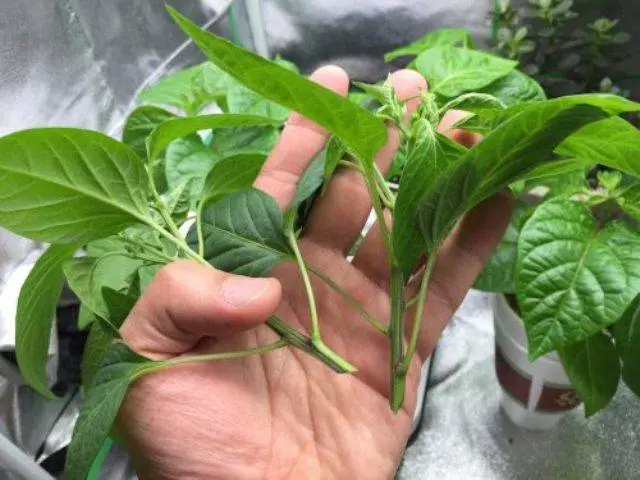
The best pepper varieties for the Urals require regular pinching. In order for the bush to be powerful and the plant to grow, remove the first flower that appears on it. Pinching will also need to be carried out after the formation of three or more branches, however, it must be carried out after the seedlings have fully adapted in the open field and rooted.
The formation of the desired crop is also important. There is no need to leave all the ovaries on the bush, since the plant will give strength to the fruit growing season. There will be a lot of peppers, but there is no guarantee that they will all have time to ripen before the onset of cold weather. Leave the fruits that have already appeared on the bush, remove the rest of the ovaries, if there are a lot of them. Also pay attention to tall varieties of pepper – the leaves must be removed from the lower part of the stem during the growth process.
Fertilizer fertilizer
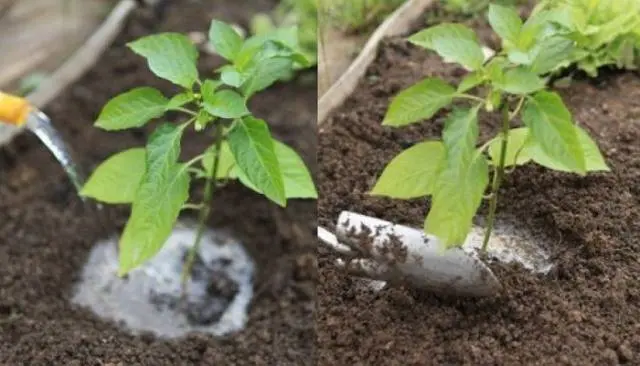
Experienced farmers of the Urals use several main types of mixtures and compositions for feeding. Throughout the entire period of growth, the bushes are fed 3-5 times with ash and about six times with any bioinfusion suitable for this variety. This is quite enough for the culture to produce stable and tasty crops.
In addition to these simple recommendations when growing productive varieties of pepper in the regions of the Urals, pay attention to the regularity and frequency of watering. Never let the soil dry out.
The best early varieties of sweet bell pepper for the Urals
Montero
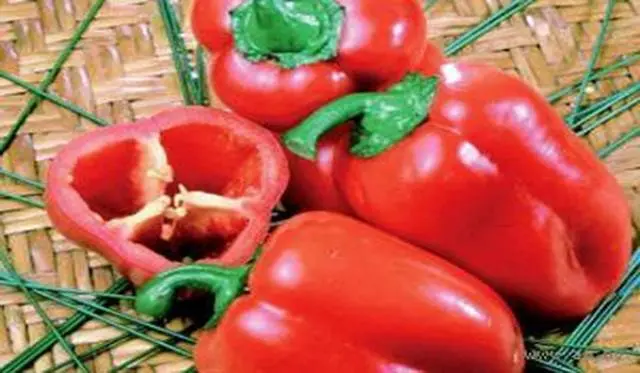
The full growing season is less than 100 days from the formation of the first shoots. The plant is a tall bush, in greenhouses and greenhouses growing up to 120 cm and above. When landing on open ground and in film shelters, it requires props and garters.
The shape of the fruit is slightly elongated, with an average weight of up to 200 gr. The skin is dense, glossy, in the period of biological maturity it has a bright red (closer to scarlet) color. Wall thickness – 7-8 mm. In the Urals, it is recommended for growing in greenhouses, but it also feels good in open areas if film protection from the wind is provided.
united
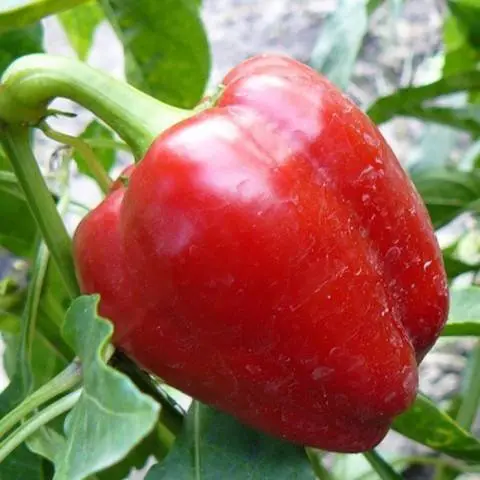
Another versatile and early ripe variety that has received well-deserved recognition from the gardeners of the Urals. Suitable for growing under film shelters and in open ground. The plant is a low-growing bush, the height of which does not exceed 80 cm, even in a greenhouse. Cuboid-shaped pepper, with a wall thickness of 10 mm, and an average weight of one fruit – up to 200 gr.
Distinctive features of the Edino variety are high yields even at low temperatures and high soil moisture associated with heavy rains. This is one of the few varieties whose seedlings do not have to be kept indoors. At a stable warm temperature, planting material is sown directly into the ground.
Winnie the Pooh
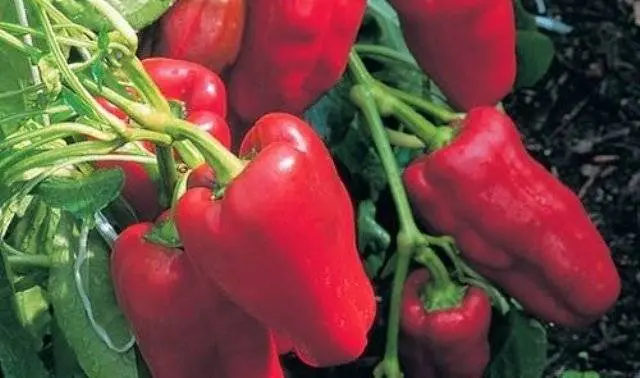
Refers to early ripening varieties, with a full growing season in the open field – up to 110 days. The plant is very small. The bush rarely rises above the ground higher than 35-40 cm. The fruits ripen together, and look very nice on the bushes in the form of scarlet bouquets. The mass of one Winnie the Pooh pepper is 50-70 g, however, this does not affect the excellent taste of this variety.
Amber
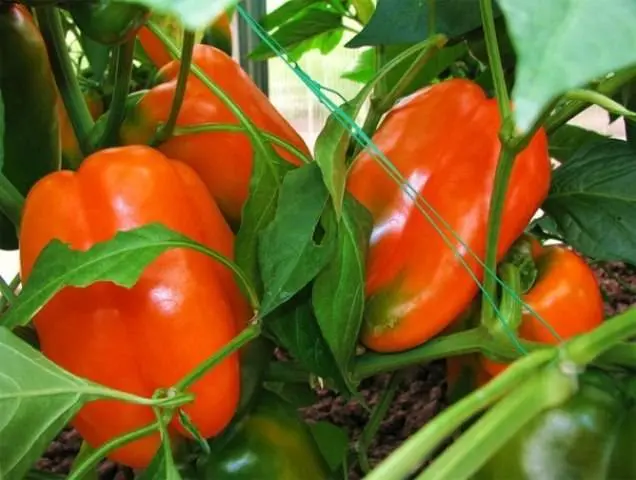
Early ripe variety for cultivation in the Urals. From the first shoots to harvesting does not take more than 115 days. The color of the fruits of the sweet pepper “Amber” is orange, from where the variety got its name. The plant is medium-sized – 80-90 cm, in a greenhouse it requires additional supports and garters.
The fruits are cone-shaped, large in size. The weight of one pepper is from 110 to 130 g, and the wall thickness is 7-8 mm. “Yantar” refers to high-yielding varieties, however, throughout the entire period of fruiting, it requires mandatory top dressing with mineral and organic fertilizers.
Agapovsky
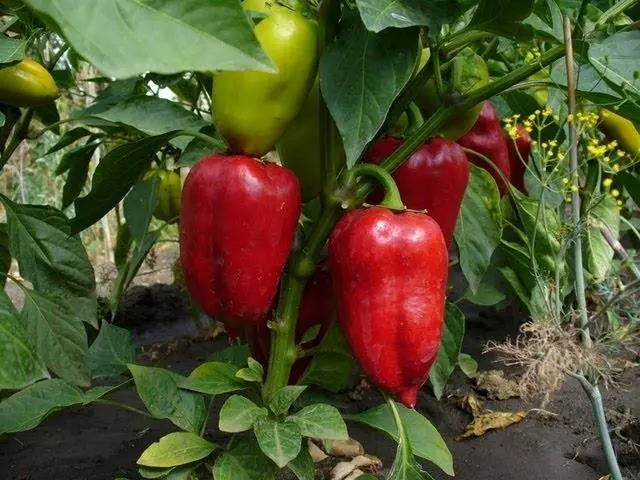
Surprisingly beautiful scarlet pepper, giving early and stable yields in film shelters and in open areas. The mass of one fruit in the period of full ripening reaches 120-140 grams, with a wall thickness of up to 8 mm. The fruits are juicy, have excellent taste, well tolerate long-term storage and transportation.
Gingerbread Man
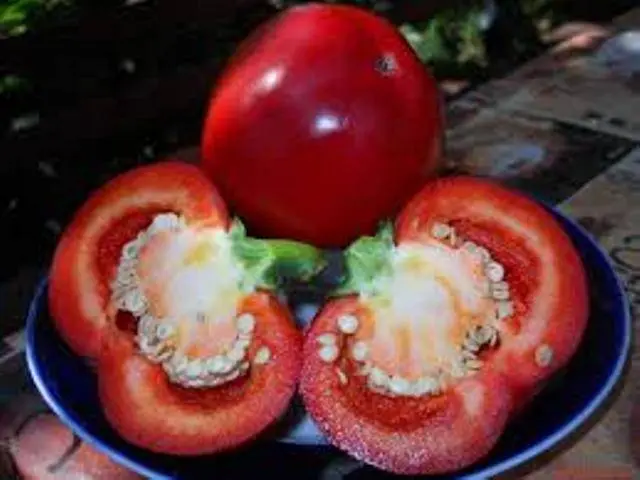
An early ripe variety of sweet pepper, bred specifically for the northern regions of the country. The bush in the period of growth arrest does not exceed 30 cm, compact. This quality of the variety allows you to significantly compact the planting of seedlings in beds and greenhouses.
The fruits of “Gingerbread Man” have an even, rounded shape, with an average weight of one pepper – up to 150 gr. Wall thickness 5-6 mm. The variety has a high and friendly yield. It is one of the few varieties that can be harvested slightly underripe to give the plant the strength to cope with the maturation and growth of the remaining crop.
Nikitich
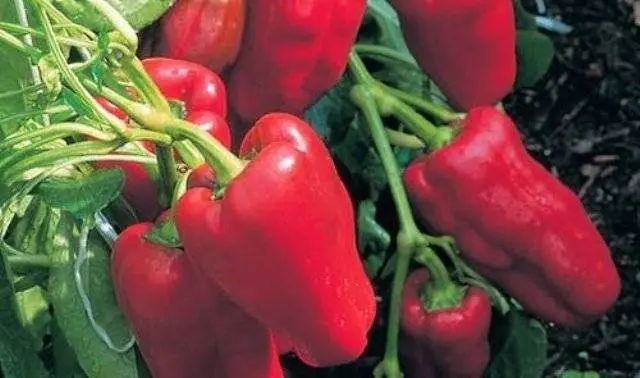
An early ripe variety of sweet pepper with low spreading bushes and large fruits, painted in a rich dark red color. The average weight of one Dobrynya Nikitich pepper is 130-150 gr, and the wall thickness can reach up to 10 mm.
Vegetation period – 110 days from the first pecking of seeds. The plant is resistant to TMV, root and fruit rot. It tolerates a slight drought well or, conversely, soil overflow on open ground. Fruits have juicy fragrant pulp, are universal. Well proven in canning and freezing for the winter.
Knight
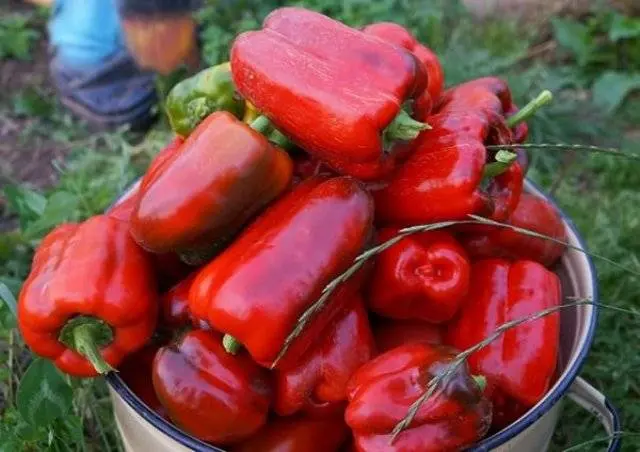
A variety of sweet bell pepper intended for tunnel shelters and open areas. The plant is a short bush, 45-50 cm high. The fruits are cone-shaped with a dense glossy skin, painted in dark red. The average weight of one pepper is 130-140 g, with a wall thickness of up to 8 mm.
The distinctive features of the Vityaz variety include resistance to viral diseases, slight drops in soil temperature, and short-term drought.
Mid-season varieties of sweet pepper for the Urals
Atlas
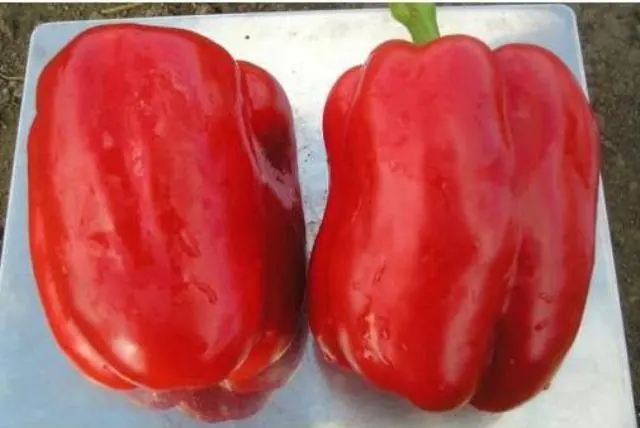
Pepper variety “Atlant” is adapted for cultivation in open ground and film tunnel shelters. The crop ripening period is from 110 to 125 days. The fruits are even, conical in shape, in biological ripeness they are painted red. The variety belongs to large-fruited ones – the weight of one Atlant pepper is from 200 grams and above, with a wall thickness of 5-6 mm.
Distinctive features of the Atlant sweet pepper variety are resistance to sharp temperature fluctuations, high taste qualities.
Bogatyr
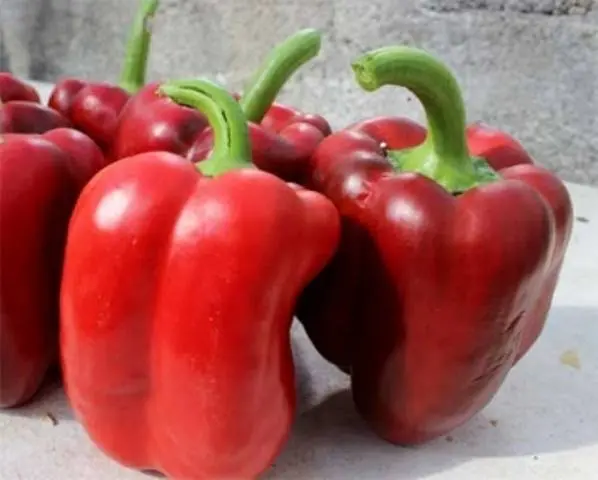
Mid-season variety with fruit growing season – up to 130 days. The fruits are large, cone-shaped. The average weight of one Bogatyr pepper is 200-250 gr, with a length of 15-17 cm. The bush is medium tall, sprawling. In a greenhouse, the plant is recommended to be tied up.
Distinctive features of the variety are resistance to TMV, fungal infections of the soil, the preservation of quality characteristics and presentation during long-term storage and transportation. The variety is very popular among gardeners in the Urals, especially if the crops are harvested for canning or sale.
Red and yellow bull

These are mid-season varieties of peppers, differing only in the color of the fruit. Pepper prismatic, very large in size. The mass of one fruit during the period of full ripening can reach 220 grams, with a wall thickness of up to 8 mm. The growing season begins at 110-115 days from seed pecking.
Red and yellow bulls are characterized by high yields. From one bush in August or September, you can harvest up to 8-10 kg of crop.
Merchant
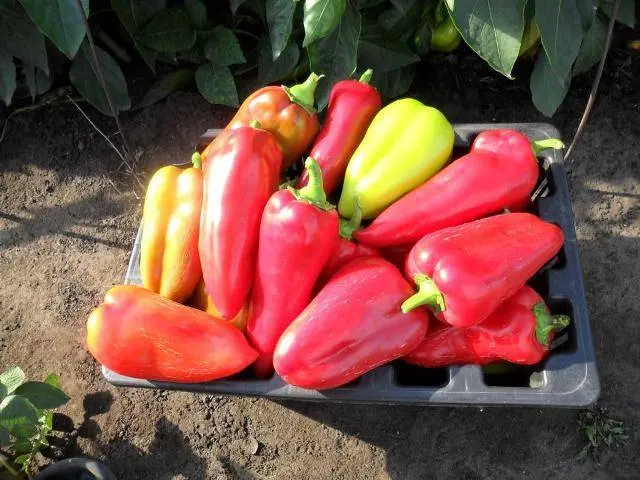
Mid-season variety with a ripening period of up to 120 days. The bush is medium-sized, and even in greenhouse conditions it does not grow above 90 cm. The fruits are cylindrical, small. The weight of one pepper “Merchant” is 100-120 gr.
Distinctive features of the “Merchant” variety are that when planting seedlings in the ground in the middle or end of May, the crop can be harvested from the beginning of September until the first cold snap on the soil. The plant perfectly tolerates a sudden cold snap and a slight drought. Up to 4-5 kg of crop is harvested from one bush.
Useful tips and tricks
And a few more useful tips for those who grow pepper in summer cottages and vegetable gardens of the Urals:
- It is necessary to transfer seedlings if the air temperature outside is stable around 150C. At first, cover with a film or spunbond at night;
- Resistance to low night temperatures can be added to the plant by means such as Zircon or Epin.
By following all the necessary recommendations for growing sweet peppers in the Urals, you can achieve quite good results and grow a tasty and large crop. For more information about the varieties and cultivation of sweet pepper in the Urals, see the video:









